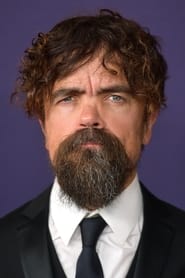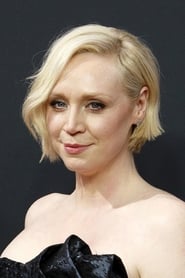
Ask Your Own Question
What is the plot?
"From the Book to the Screen" is a special feature that delves into the adaptation process of George R.R. Martin's "A Song of Ice and Fire" series into the HBO television series "Game of Thrones." The episode begins with an introduction to the challenges faced by the creators, including showrunners David Benioff and D.B. Weiss, as they discuss the complexities of translating the rich, intricate narrative of the books into a visual medium.
The episode highlights the initial meetings between the showrunners and George R.R. Martin, where they express their admiration for the source material. Martin shares his thoughts on the adaptation process, emphasizing the importance of staying true to the characters and the essence of the story while also recognizing the need for changes to fit the television format.
As the narrative progresses, the special showcases various key scenes from the first season, illustrating how specific moments were crafted for the screen. The creators discuss the casting process, revealing how they sought actors who could embody the depth of their characters. Interviews with the cast members provide insight into their motivations and how they approached their roles, with particular focus on characters like Jon Snow, Daenerys Targaryen, and Tyrion Lannister.
The episode also explores the visual aspects of the show, including set design and costume creation. Behind-the-scenes footage reveals the meticulous attention to detail that went into recreating the world of Westeros, from the icy landscapes of the North to the vibrant markets of King's Landing. The production team discusses the challenges of bringing fantastical elements, such as dragons and direwolves, to life, showcasing the use of practical effects alongside CGI.
As the special continues, it delves into the thematic elements of the series, highlighting the moral complexities faced by the characters. The creators reflect on pivotal moments that define the series, such as the Stark family's struggles and the political machinations of the Lannisters. They emphasize the importance of character development and how the choices made by each character drive the overarching narrative.
The episode concludes with a look at the impact of "Game of Thrones" on popular culture and its reception by audiences. The creators express their hopes for the future of the series, hinting at the expansive storylines yet to be explored. The special ends on a note of anticipation, leaving viewers eager for the unfolding saga of power, betrayal, and survival in the world of Westeros.
What is the ending?
In the episode "From the Book to the Screen," the focus is on the adaptation process of "Game of Thrones" from George R.R. Martin's "A Song of Ice and Fire" series to the television screen. The episode does not have a traditional narrative ending as it is a behind-the-scenes special, but it highlights the creative journey and the challenges faced by the cast and crew in bringing the story to life.
Expanded Narrative:
The episode opens with a montage of scenes from the series, interspersed with interviews from the cast and crew. The tone is reflective, as they discuss the monumental task of adapting a beloved book series into a television format. The camera pans over the stunning landscapes of Northern Ireland, where much of the filming takes place, showcasing the breathtaking scenery that serves as the backdrop for the Seven Kingdoms.
As the narrative unfolds, we see the writers, David Benioff and D.B. Weiss, discussing their approach to the source material. They emphasize the importance of staying true to the essence of the characters while also making necessary changes for the screen. The episode features clips of pivotal moments from the series, illustrating how certain scenes were crafted to evoke specific emotions and reactions from the audience.
The focus shifts to the actors, who share their experiences in portraying complex characters. Emilia Clarke, who plays Daenerys Targaryen, reflects on her character's evolution from a timid girl to a powerful leader. Kit Harington, portraying Jon Snow, discusses the internal struggles of his character, particularly the themes of honor and loyalty that drive Jon's decisions throughout the series.
The episode also delves into the production aspects, showcasing the elaborate set designs, costume creations, and the use of special effects to bring the fantastical elements of the story to life. The behind-the-scenes footage reveals the meticulous attention to detail that goes into every aspect of the show, from the intricate armor worn by the knights to the lifelike dragons that Daenerys commands.
As the episode progresses, it highlights key themes such as the moral ambiguity of the characters and the unpredictable nature of power. The cast members express their thoughts on the challenges their characters face, including betrayal, loss, and the quest for identity in a world filled with conflict.
In the concluding moments of the special, the cast and crew reflect on the impact of the series and its reception by fans. They express gratitude for the opportunity to be part of such a groundbreaking project and acknowledge the passionate fanbase that has embraced the story. The episode ends with a sense of anticipation for the future of the series, leaving viewers eager for what lies ahead in the unfolding saga of "Game of Thrones."
Overall, "From the Book to the Screen" serves as a celebration of the collaborative effort that brings the world of Westeros to life, emphasizing the dedication and creativity of everyone involved in the production.
Is there a post-credit scene?
In the episode "From the Book to the Screen" from the Game of Thrones specials, there is no post-credit scene. The episode primarily focuses on the adaptation process of George R.R. Martin's "A Song of Ice and Fire" series into the television series. It features interviews with the cast and crew, exploring their insights and experiences during the production. The episode delves into the challenges of translating the complex narrative and rich world of the books into a visual medium, highlighting the creative decisions made along the way. It concludes without any additional scenes or content after the credits.
How did the show adapt the character of Tyrion Lannister from the books to the screen?
The adaptation of Tyrion Lannister from George R.R. Martin's books to the screen was marked by a focus on his wit, intelligence, and complexity. The show emphasized his struggles with family dynamics, particularly with his father Tywin and sister Cersei, showcasing his resilience and resourcefulness. The casting of Peter Dinklage brought a unique depth to the character, allowing viewers to connect with Tyrion's vulnerabilities and moral dilemmas, particularly in his quest for acceptance and power.
What changes were made to the character of Daenerys Targaryen in the adaptation?
Daenerys Targaryen's journey from a timid girl to a powerful leader was visually and emotionally portrayed with significant changes in the adaptation. The show highlighted her transformation through key scenes, such as her emergence from the flames with the dragons, which was a pivotal moment that showcased her strength and destiny. The series also explored her relationships with characters like Jorah Mormont and her evolving sense of justice, emphasizing her internal conflicts and motivations as she sought to reclaim her family's throne.
How did the show depict the relationship between Jon Snow and Arya Stark differently from the books?
In the adaptation, the relationship between Jon Snow and Arya Stark was portrayed with a strong emotional bond, emphasizing their shared sense of loyalty and love for family. The show included poignant moments, such as their farewell in Season 1, which underscored their connection. While the books provide more internal monologues and backstory, the series visually captured their bond through shared experiences and the harsh realities of their separate paths, highlighting their resilience and determination to reunite.
What were the key differences in the portrayal of the Stark family dynamics in the show compared to the books?
The Stark family dynamics in the show were depicted with a focus on visual storytelling and emotional resonance. Key scenes, such as the execution of Ned Stark, were dramatized to heighten the sense of loss and betrayal. The show emphasized the individual struggles of each Stark child, showcasing their growth and the impact of their father's death on their relationships. While the books delve deeper into the internal thoughts of each character, the series relied on powerful performances and visual cues to convey the family's disintegration and the resulting quest for vengeance and justice.
How did the adaptation handle the political intrigue surrounding the Iron Throne and its claimants?
The adaptation of the political intrigue surrounding the Iron Throne was marked by a focus on key power struggles and alliances. The show visually represented the tension between characters like Cersei Lannister, Robb Stark, and Stannis Baratheon through dramatic confrontations and strategic moves. The series highlighted the consequences of betrayal and ambition, particularly in scenes like the Red Wedding, which served as a shocking turning point in the power dynamics of Westeros. The visual storytelling captured the complexity of loyalties and the brutal reality of the quest for power, making the political landscape both engaging and treacherous.
Is this family friendly?
"Game of Thrones: From the Book to the Screen" is a behind-the-scenes special that delves into the adaptation of George R.R. Martin's novels into the television series. While it provides insights into the production, characters, and themes, it may contain elements that could be objectionable or upsetting for children or sensitive viewers.
-
Violence and Gore: The special discusses the violent themes present in the series, including battles and character deaths, which may be unsettling.
-
Sexual Content: There are references to the sexual themes and scenes that are prevalent in the show, which may not be suitable for younger audiences.
-
Dark Themes: The exploration of betrayal, power struggles, and moral ambiguity can be intense and may be distressing for some viewers.
-
Emotional Weight: The emotional struggles of characters, including loss and trauma, are discussed, which could resonate deeply and be upsetting.
-
Language: There may be discussions that include strong language or adult themes that are not appropriate for children.
Overall, while the special is informative and engaging for fans of the series, it contains elements that may not be family-friendly.
























